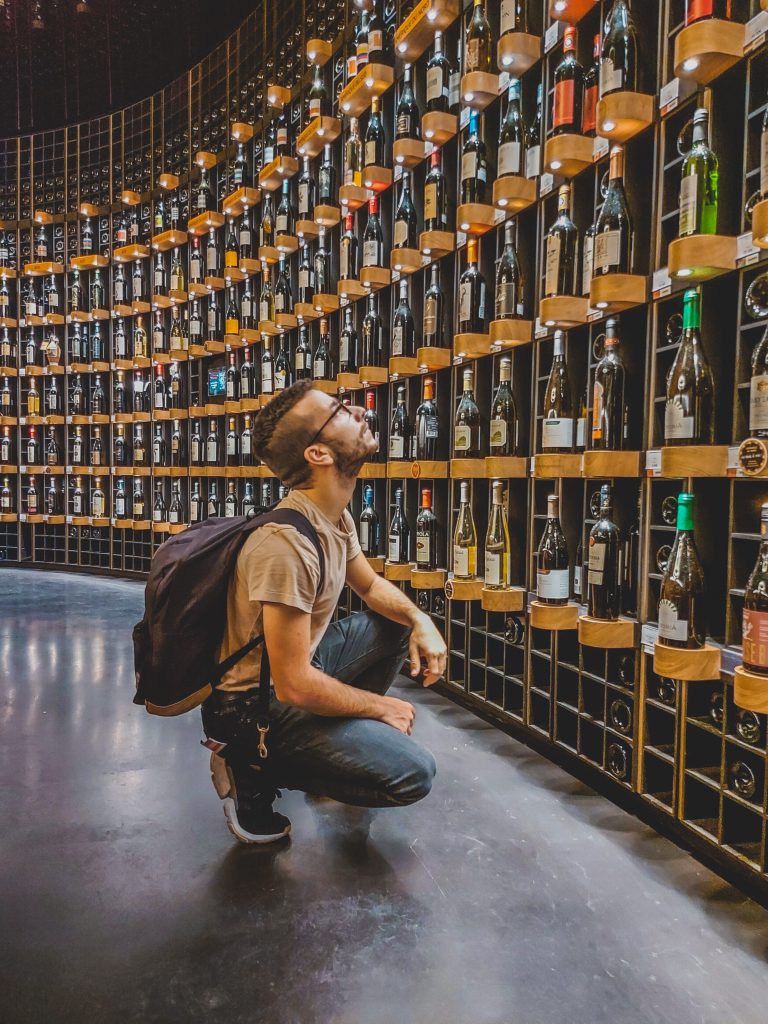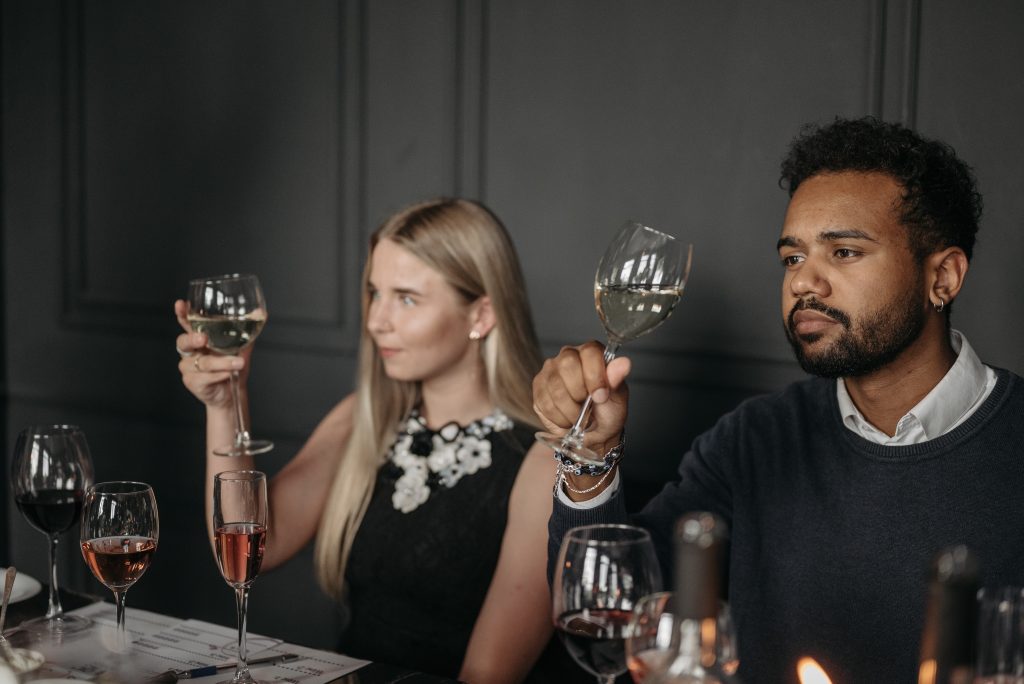Imagine: just like so many people, you sometimes like a glass and enjoy nice combinations with dishes at a restaurant.
But once in the store, when all those bottles are staring at you, begging to be bought, you have no idea what to try. Except, again, that wine you've always taken.
There are many ways to choose wine: based on the price, the label, the promo, the store, the advice, your mood or the harsh judgment of the people you will be sharing that wine with.
It would make more sense if it were based on what you like and, second, related to the occasion.
Let's start with an obvious question: “Which wine do you like to drink?”
Well... we can answer that, but we understand that you don't want to spend the same amount of time on the subject... So here are some decent alternatives, which are limited in time and optimised in terms of user experience.
Do you have five friends?
Acquaintances, perhaps?
Colleagues possibly?
Family if necessary…*
Perfectl! Agree on a place and time when you will taste wines together. Then define a theme. Plenty of options: Southern French red wine, Chardonnay, New World rosé, red and less than three years old, blend with Chenin Blanc, white between 15 and 20€… You name it!

Each brings a bottle, at the right temperature and wrapped in aluminum foil: temperature stable and unrecognizable. Yes, there are special wine stockings for that and that works fine too, but let's just concentrate on the wine for now.
Bottle after bottle is tasted, discussed, re-tasted and re-discussed. Then we start again, it will be clear that you do not serve large glasses, and based on the experiences with the other wines there will be new points of interest, different taste experiences and conclusions.
After that, all of the bottles are identified, and can help you determine which one is your favourite, which is not, which can be combined with certain kinds of food and which are the wines that you will never buy.
Six regular glasses, twelve sample quantities, we know that by now? So five or six people is ideal. Also in terms of quantity to evaluate correctly…
Tip: it is always interesting when someone with culinary knowledge is present. Even if you don't care about food pairing, this can provide interesting insights. It is also not the intention to write down and study everything. Believe me, what pleases you enough will be remembered. The rest can fade, because there is still a lot to taste!
And if you really don't get along with anyone…
Or just don't have the right friends for the above.
Or you have done those tastings with friends and now want to broaden your horizon, you can visit commercial tastings. Wine merchants invariably do tastings in spring and autumn. The intention is of course to sell, but there is no obligation. Deals can usually be made, take advantage of it if you are convinced of your choice.
Our advice: start with wine merchants who offer a wide range. Who sell and let taste French, Italian, Australian, Spanish, German, South American, African, Austrian… wines. This way you will learn what is on the market and what the characteristics are for each country or region.
Those spittoons are not there for flowers!
If you want to taste ten or more wines, it is best to spit out most of them. There will always be some that are ok (spit out!) and some that will blow you away. You can then swallow the latter with peace of mind.
If there is baguette or an alternative, this is highly recommended. It will cleanse your mouth and give your stomach some solid filling. Tapas and the like affect your taste buds and are best avoided unless you haven't eaten for a while…

Also listen to the comments, from both the shop people and the tasters. The first ones will know what they are saying and you will learn from them. The tasters sometimes dare to “hit the wall” (West Flemish for telling the wrong things). But if it's not educational, it's entertaining. Especially if they have thoroughly tasted a few wines. You always learn something, even if it is only a reference to an aroma that you hadn't thought of yourself yet.
Be warned, wine is like anything else: the more you know about it, the more you realize how little you know…
After you have tasted wines from all regions, you already have an idea of what your preference is. Do you like both the Barolo and the Chianti? Then maybe grab a purely Italian degustazione. Or are you more for straightforward Australian? Plenty of choice at a specialist in New World wines. Perhaps you have a thing for the freshness of German and Austrian wines? They are also tastable side by side. Do you like the unknown grape varieties and typical flavours from Portugal? There are themed tastings around them! Or rather a classic French preference? Then the tasting periods become busy times, because you can taste them on every street corner (so to speak, huh…)!
And if, like Milo, you're happy with that, then you've come a long way. And you can describe your own taste, you know what doesn't necessarily excites you, you can estimate which type of wine goes well with which dish and, above all, which wines/regions/grapes/regions you still have to discover.
However, nothing prevents, like Davy, from diving into books, doing research on the Internet, studying “le nez du vin”, taking courses with real exams and further expanding your knowledge.
As long as it gives you pleasure, because that's what wine is about right?!
de wijnproever
* : for a modest fee we can provide tasters if desired.

